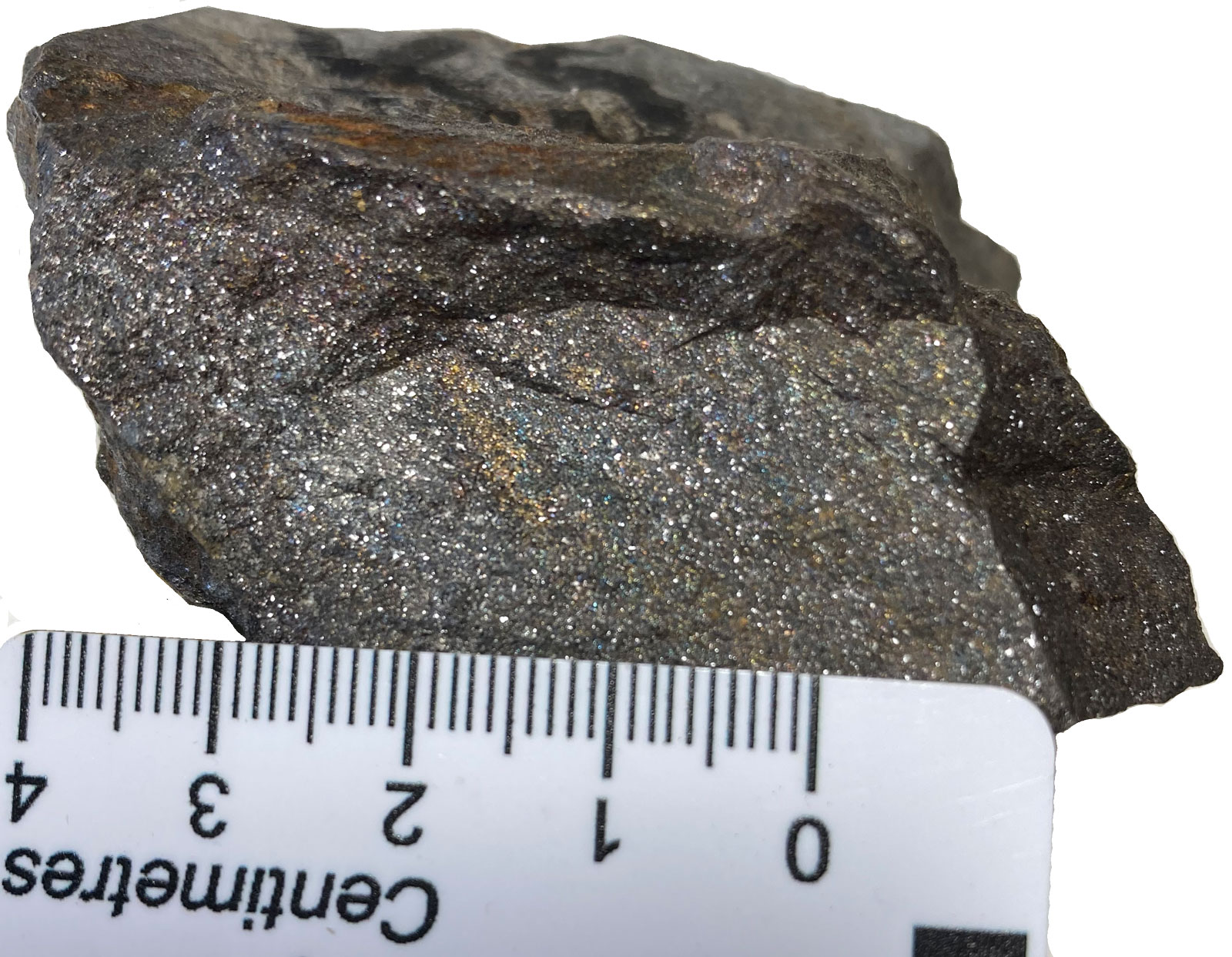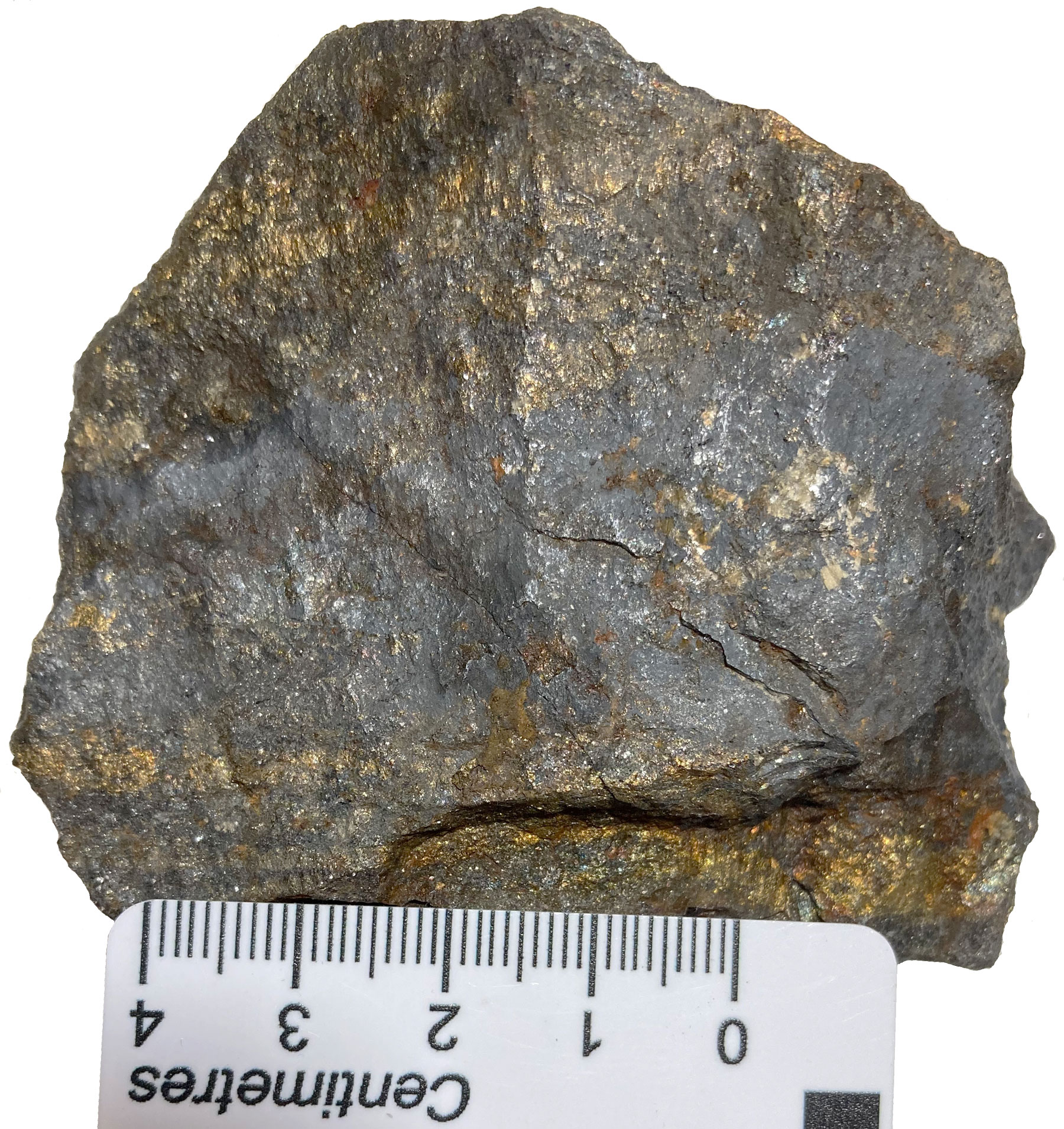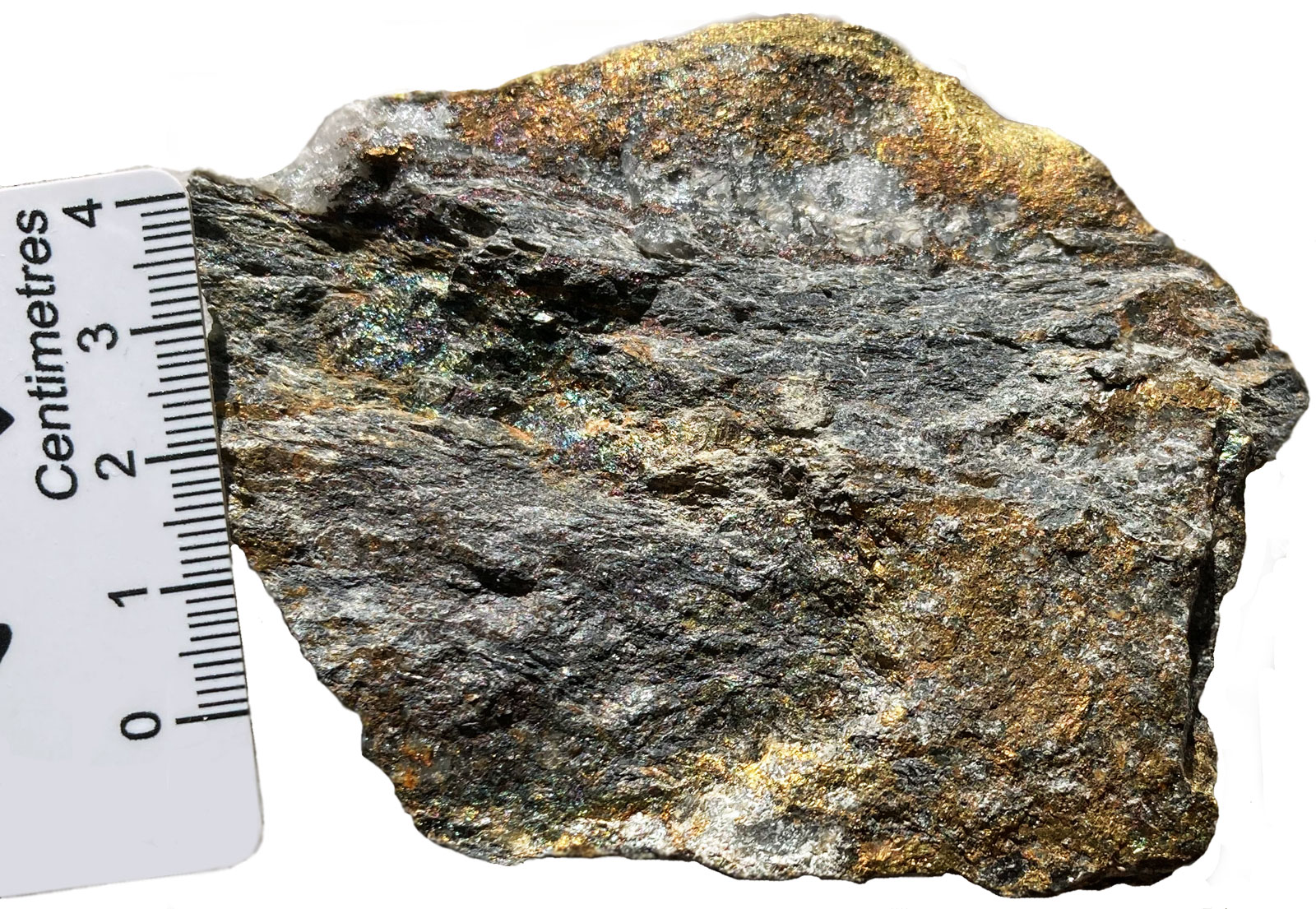|
Kidd Creek |
|
|
Ontario, Canada |
| Main commodities:
Zn Cu Ag Pb
|
|
 |
|
 |
 |
Super Porphyry Cu and Au


|
IOCG Deposits - 70 papers

|
All papers now Open Access.
Available as Full Text for direct download or on request. |
|
 |
The Kidd Creek volcanic hosted massive sulphide (VHMS) deposit lies within the Archaean Superior Craton in the Timmins-Porcupine district, and is located 25 km north of Timmins, Ontario, Canada.
(#Location: 48° 41' 21"N, 81° 22' 17"W).
The Kidd Creek deposit was discovered during follow-up of an anomaly interpreted from an airborne EM survey conducted by Texas Gulf Sulphur Company in March 1959. The follow-up included a ground electromagnetic survey which was conducted in October 1963, followed by drill hole K55-1 which intersected 182 m averaging 1.15% Cu, 8.64% Zn and 122 g/t Ag. The first seven drill holes indicated an initial body with plan dimensions of 245 x 90 m, persisting to a depth of greater than 250 m. Mine production commenced in 1966, initially as an open pit, transitioning to an underground mine in 1972. The operation was acquired by the Canada Development Corporation in 1981, then in 1986, when the latter was privatised, was on-sold to Falconbridge Ltd., which was acquired in 2006 by Xstrata, that in turn merged with Glencore in 2013. By 2003, mineralisation was shown to persist to a depth of 3109 m vertically below ground level, where an intersection within the orebody cut 442.5 m @ 1.16% Cu, 7.76% Zn, 0.73% Pb and 84 g Ag, and finished in sulphides. The base of the No.4 shaft at 3014.3 m below the surface, and 2735 below sea level, is the current (2022) deepest development.
The ore deposit is hosted by the Kidd Volcanic Complex which is part of the 2.710 to 2.717 Ga Kidd-Munro assemblage, that in turn lies within the western Abitibi-Wawa Sub-province of the Superior Province. The Kidd-Munro assemblage is a east-west striking steeply dipping and folded package of intercalated ultramafic, mafic and lesser felsic metavolcanic rocks and intrusions which extends from 30 km west of Kidd Creek, eastward for 165 km to the Quebec border. In Quebec it is interpreted to be continuous with the similar age and composition Stoughton-Roquemaure and lower Malartic groups to the north and east. The Kidd-Munro assemblage contains other lesser VHMS deposits, including the Chance deposit (2.25 km west of Kidd Creek), the Potter and Potterdoal mines (100 km east of Kidd Creek), and several small deposits and occurrences in the Stoughton-Roquemaure and lower Malartic groups in Quebec.
At Kidd Creek, the Kidd Volcanic Complex is a coherent, although structurally complicated lithostratigraphic package containing a strongly bimodal suite of komatiitic and high silica rhyolite flows overlain by tholeiitic basalts. It is structurally underlain by younger Porcupine Group wackes, across a contact that takes the form of a steeply dipping folded thrust or unconformity. In the mine area, the sequence if overturned, strikes north-south, face west and dip at 70 to 80° east, to define an asymmetric, S-shaped, steeply north plunging F1 fold.
The known stratigraphic sequence of the Kidd Volcanic Complex in the mine area commences with up to 500 m of carbonate altered komatiitic flows and intrusions which appear to have formed a broad, low-relief lava plain upon which the Kidd Creek rhyolitic dome and ridge complex was constructed. The Footwall rhyolite dome complex (variously dated at 2717.0 ±2.6 Ma, 2716.1 ±0.6 Ma and 2716.0 ±0.5 Ma) comprises domes, cryptodomes and associated volcaniclastic rocks. The rhyolites are interpreted to have been extruded from two fissures to produce an up to 350 m high monogenetic dome and ridge complex that extended below, and along the entire 3 km length of the known orebodies. The Footwall rhyolite and massive sulphides are conformably overlain by the 120 m thick, 2711.5 ±1.2 Ma, QP rhyolite. The Footwall and QP rhyolite ridges and the massive sulphide deposits all appear to have restricted but linear, ridge-like morphologies which have been accentuated during subsequent deformation. These observations are interpreted to indicate primary and pronounced structural control of both volcanism and emplacement of hydrothermal mineralisation (Gibson et al., 2003). Zircon U-Pb dating indicates that the eruption of the Footwall and QP rhyolites spanned a period of up to 2.8 Ma.
Volcaniclastic rocks sandwiched between the Footwall and QP rhyolites, also referred to as epiclastic deposits appear to be primary, syn-eruptive, locally-transported deposits derived from autobrecciation and collapse of underlying Footwall rhyolite domes and pre-existing massive sulphide accumulations and contain blocks and lapilli-sized fragments of massive pyrite and sphalerite in proximity to the massive sulphide lenses.
The QP Rhyolite is conformably overlain by a thick succession of tholeiitic basaltic and andesitic flows, while gabbro sills that have dilated the rhyolite stratigraphy in the mine area are taken to represent hypabyssal intrusive equivalent of these overlying basaltic flows.
The Kidd ore system comprises the three geochemically distinct and physically separated North, Central and South sulphide orebodies, each of which is characterised by i). pyritic tops and lateral fringes, ii). Zn-rich interiors (sphalerite-pyrite), iii). massive to semi-massive, Cu-rich bases (chalcopyrite-pyrrhotite-pyrite-sphalerite), and, iv). underlying chalcopyrite-pyrrhotite-pyrite stringer mineralisation. In addition, the South orebody also had a bornite zone within the Cu-rich massive and stringer ore.
Significant sections of all three orebodies were developed by replacement of the adjoining footwall volcaniclastic units, as indicated by: a). post-depositional replacement of rhyolitic fragments and matrix by pyrite and sphalerite; b). preservation of relicts of massive pyrite and sphalerite within the chalcopyrite-pyrrhotite ore; and c). discordant contacts between massive sulphides and bedding.
In general, each of the orebodies is composed of i). stringer and ii). massive banded and brecciated pyrite, sphalerite and galena associated with carbonaceous rocks. The composite shape of the massive and breccia, and the stringer ore respectively, for the three orebodies may be broadly represented as two parallel, overlapping, elongate flattened cylindrical masses, with gaps and offsets. The massive sulphide lens is generally 100 to a maximum of 400 m wide and around 30 m thick, with a down plunge extent of more than 3000 m.
A broad halo of sericitisation envelopes the massive sulphide orebodies, characterised by K2O enrichment and Na2O depletion. This alteration is preferentially developed within the footwall but which also extends into the overlying QP Rhyolite. Fe-chloritisation is restricted to the margins of footwall chalcopyrite stringer zones. Both the sericitisation and chloritisation overprint a broad and widespread silicification.
Published production and reserve figures include:
Production 1963 to 2003 - 124.22 Mt grading 6.18 % Zn, 2.31% Cu, 0. 22% Pb and 87 g/t Ag,
At December 2003, the reserves and resources (Falconbrige 2003 Annual Report) were:
Proved Ore Reserves - 12.585 Mt @ 1.86% Cu, 5.60% Zn, 71 g/t Ag,
Probable Ore Reserves - 8.239 Mt @ 2.23% Cu, 7.00% Zn, 53 g/t Ag,
TOTAL Ore Reserves - 20.824 Mt @ 2.01% Cu, 6.15% Zn, 64 g/t Ag,
Measured mineral resources - 276.00 Mt @ 1.34% Cu, 6.00% Zn, 47 g/t Ag,
Indicated mineral resources - 77.00 Mt @ 2.82% Cu, 8.54% Zn, 52 g/t Ag,
Measured + Indicated Mineral Resources - 353 Mt @ 1.66% Cu, 6.55% Zn, 48 g/t Ag,
Inferred mineral resources - 14.200 Mt @ 3.40% Cu, 4.90% Zn, 91 g/t Ag,
NOTE: Reserves are additional to Resources.
In 2003 the deposit had been intersected from within 8 m of the surface to a depth of 3109 m vertically below ground level, where an intersection within the orebody cut 442.5 m @ 1.16% Cu, 7.76% Zn, 0.73% Pb and 84 g Ag, and finished in sulphides.
At December 2006, the reserves and resources quoted by Kidd Creek Division of Xstrata Ltd were:
Proved ore reserves - 19.6 Mt @ 2.00% Cu, 5.29% Zn, 0.17% Pb, 53 g/t Ag,
Probable ore reserves - 1.4 Mt @ 1.61% Cu, 5.97% Zn, 0.11% Pb, 33 g/t Ag,
Measured mineral resources - 21.3 Mt @ 2.24% Cu, 5.73% Zn, 0.19% Pb, 57 g/t Ag,
Indicated mineral resources - 1.8 Mt @ 1.80% Cu, 6.28% Zn, 0.13% Pb, 38 g/t Ag,
Inferred mineral resources - 0.4 Mt @ 1.7% Cu, 3.2% Zn, 0.2% Pb, 34 g/t Ag,
NOTE: The large difference in tonnage of Measured Resources compared to 2003 is due to a higher cut-off in 2006.
Production in 2006 was 2.5 Mt @ 2.05% Cu, 5.24% Zn, 66 g/t Ag.
At 31 December 2022, the Ore Reserves and Mineral Resources quoted in the 2022 Glencore Resources and Reserves were:
Proved Ore Reserves - 1.6 Mt @ 1.75% Cu, 3.11% Zn, 44 g/t Ag,
Probable Ore Reserves - 0.9 Mt @ 1.33% Cu, 4.06% Zn, 26 g/t Ag,
TOTAL Ore Reserves - 2.5 Mt @ 1.60% Cu, 3.45% Zn, 38 g/t Ag,
Measured Mineral Resources - 4.5 Mt @ 1.62% Cu, 3.51% Zn, 44 g/t Ag,
Indicated Mineral Resources - 0.5 Mt @ 1.56% Cu, 4.39% Zn, 37 g/t Ag,
Measured + Indicated Mineral Resources - 5.0 Mt @ 1.61% Cu, 3.61% Zn, 43 g/t Ag,
Inferred mineral resources - Nil,
NOTE: Resources are inclusive of Reserves.
Production in 2022 was 1.25 Mt @ 2.16% Cu, 3.61% Zn, 47 g/t Ag.
This description was largely summarised from Gibson et al., 2003.
For detailed information see: Hannington, M.D. and Barrie, C.T., (Eds.), 1999 - The Giant Kidd Creek Volcanogenic Massive Sulfide Deposit, Western Abitibi Subprovince, Canada; Economic Geology Monograph 10, ISBN 99-76118, 676p.



Kidd Creek Mineralisation
Top - Massive sulphide, sphalerite-chalcopyrite ore.
Middle - Banded, chalcopyrite-sphalerite ore at the base of the massive sulphide lens.
Lower - Stringer chalcopyrite-pyrrhotite ore in altered volcanic host.
Collected 1997 and imaged by Mike Porter 2022.
The most recent source geological information used to prepare this decription was dated: 2006.
This description is a summary from published sources, the chief of which are listed below.
© Copyright Porter GeoConsultancy Pty Ltd. Unauthorised copying, reproduction, storage or dissemination prohibited.
Kidd Creek
|
|
|
|
|
Beaty D W, Taylor H P, Coad P R 1988 - An Oxygen isotope study of the Kidd Creek, Ontario, volcanogenic massive Sulfide deposit: evidence for a high 18 O ore fluid: in Econ. Geol. v83 pp 1-17
|
Hannington, M.D. and Barrie, C.T., (Eds.), 1999 - The Giant Kidd Creek Volcanogenic Massive Sulfide Deposit, Western Abitibi Subprovince, Canada: in Economic Geology Monograph 10, 676p.
|
Kidd Creek Geology Department 1997 - Welcome/Bienvenue to Falconbridge Limited Kidd Creek Mines: in Falconbridge Kidd Creek Handout - Unpub. 13p
|
Snyder D B, Bleeker W, Reed L E, Ayer J A, Houlé M G and Bateman R, 2008 - Tectonic and Metallogenic Implications of the Regional Seismic Profiles in the Timmins Mining Camp: in Econ. Geol. v103 pp 1135-1150
|
Walker R R, Matulich A, Amos A C, Watkins J J, Mannard G W 1975 - The geology of the Kidd Creek mine: in Econ. Geol. v70 pp 80-89
|
|
Porter GeoConsultancy Pty Ltd (PorterGeo) provides access to this database at no charge. It is largely based on scientific papers and reports in the public domain, and was current when the sources consulted were published. While PorterGeo endeavour to ensure the information was accurate at the time of compilation and subsequent updating, PorterGeo, its employees and servants: i). do not warrant, or make any representation regarding the use, or results of the use of the information contained herein as to its correctness, accuracy, currency, or otherwise; and ii). expressly disclaim all liability or responsibility to any person using the information or conclusions contained herein.
|
Top | Search Again | PGC Home | Terms & Conditions
|
|